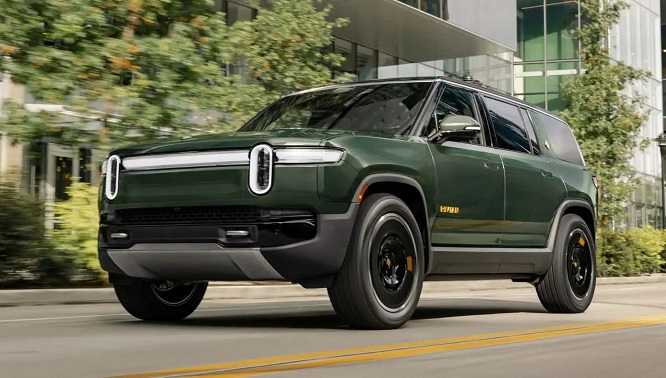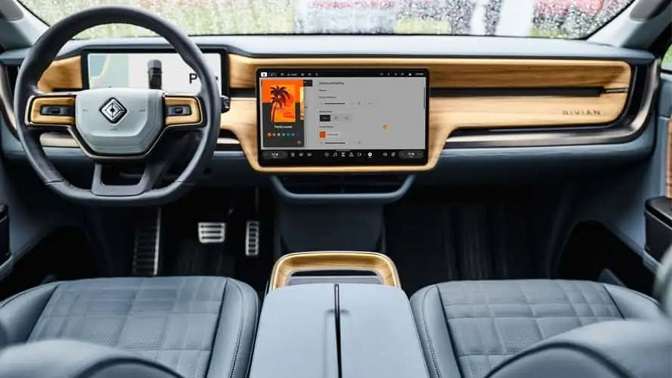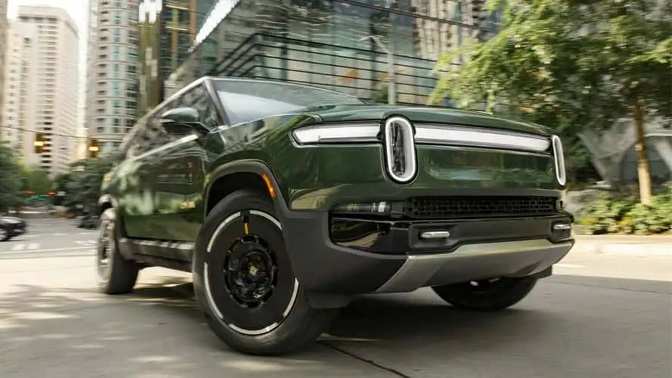Second-Generation 2025 Rivian R1 Models- Everything We Know with Significant Updates
After nearly three years on the market, Rivian’s R1 models, including the R1S SUV and R1T pickup truck, are receiving a mid-lifecycle refresh. This second-generation R1 features updated styling, new wheel designs, and advanced technology, but most improvements are under the hood.

Factory Upgrades for Enhanced Production
In April, Rivian temporarily shut down its Normal, Illinois factory for four weeks to retool and implement new technologies for the updated R1 trucks. This upgrade not only enhances the R1 assembly process but also sets the stage for the future production of the smaller R2 model. The updated R1S is already in production, with the R1T soon to follow.
Battery Chemistry and Capacity Changes
One of the major changes in the second-generation R1 is the switch in battery chemistry. The base battery pack uses lithium iron phosphate (LFP) instead of nickel manganese cobalt (NMC). While the first-gen Standard pack had a usable capacity of 105.9 kWh, the new LFP pack offers slightly less at 92.5 kWh. Despite this reduction, Rivian maintains the same 270-mile EPA range.
For those seeking more range, Rivian offers a Standard+ battery with 109 kWh, down from 128.9 kWh in the previous model. This pack, using new NMC cells, is expected to deliver 330 miles of range, a slight decrease from the earlier 350 miles. The Max battery pack has also upgraded with 141.5 kWh capacity, providing 380 miles of range or 410 miles in Conserve mode.
Cost-effective and Simplified Production
To reduce costs, Rivian has streamlined the battery packs, cutting the number of components from 41 to 16, which lowers manufacturing costs. The company has also introduced four new powertrain levels with in-house built motors replacing the previous Bosch drive units. The base models now feature a dual-motor setup with 553 horsepower, which can be boosted to 665 hp with a Performance software upgrade.
A new Tri-Motor version is available, featuring two rear motors and one front motor, delivering a combined 850 horsepower, surpassing the old quad-motor variant’s 835 horsepower. The updated Quad-Motor model now boasts 1,025 horsepower and 1,198 pound-feet of torque, achieving a 0 to 60 mph time of around 2.5 seconds, half a second quicker than the previous model.

Improved Software and User Interface
The refreshed R1 models come with a significantly improved software system, powered by Unreal Engine, enhancing the user interface and making menu navigation and settings adjustments more intuitive. The software glitches that plagued earlier models have been addressed, and the overall user experience has been greatly improved.
Subtle Exterior and Interior Changes
While the updated R1 models look almost identical to their predecessors, there are subtle visual changes. The front and rear light bars have been redesigned, and new wheel designs and brake calipers, now silver instead of yellow, have been introduced. Buyers can also opt for a blacked-out badge pack for a more understated look.

Inside, Rivian has replaced physical interior door handles with electronic door poppers, similar to those found in many other EVs, including Teslas.
Rivian’s second-generation R1 models bring significant updates under the skin, focusing on efficiency, cost reduction, and enhanced user experience. With improved battery chemistry, streamlined production processes, and upgraded software, Rivian is poised to continue its growth and innovation in the EV market. The subtle exterior tweaks and new features ensure the R1 models remain competitive and appealing to new and existing customers.
Related Post
